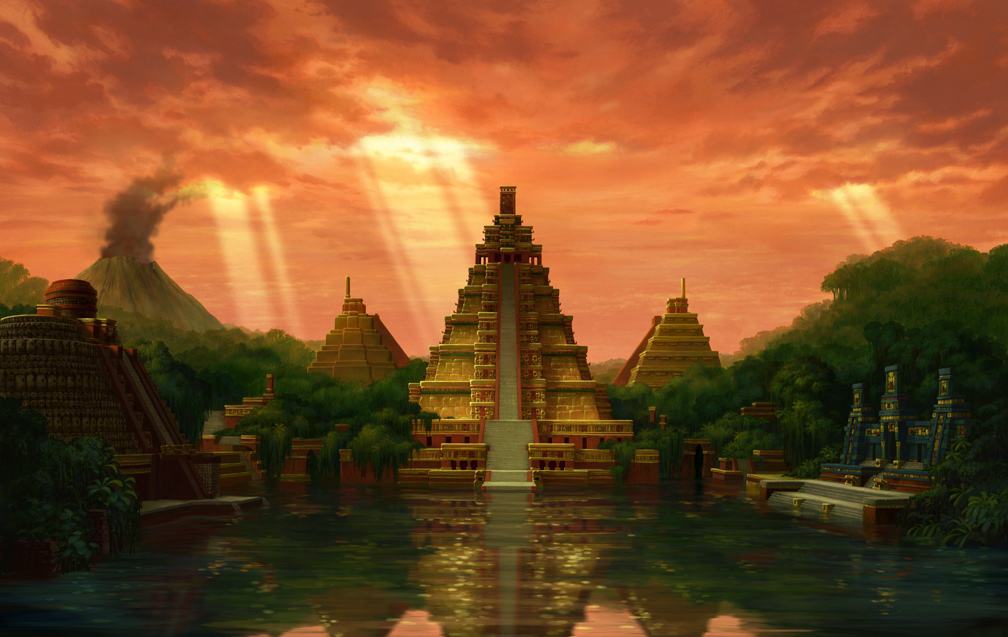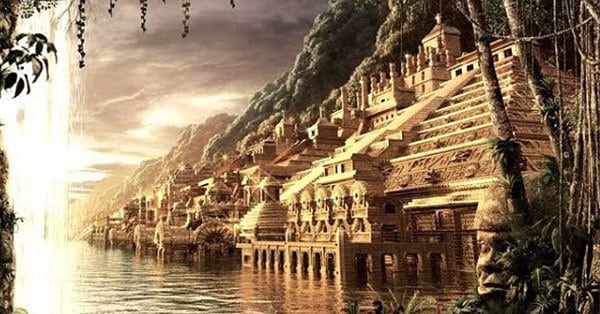The Age of Exploration was marked as much by a lust for riches as it was a thirst for adventure. European explorers were notorious for greedily grabbing every piece of precious metal and jewel they could lay their hands on. Nowhere was the divide between the cultures of Europe and South America more apparent than in the myth of El Dorado.
For the South Americans, El Dorado was a mythical ruler so wealthy that he covered himself head to toe in gold and washed it off in Lake Guatavita as an initiation rite. Various conquistadores arriving in the New World in the 16th and 17th centuries wrote about the ceremony of El Dorado.
One of the best-known accounts is called ‘The Conquest and Discovery of the New Kingdom of Granada’ written by Juan Rodriguez in 1638. In the book, Rodriguez described the process of succession within the Muisca kingdom which involved the aforementioned ritual. Each new king would be naked barring a covering of gold dust, and he threw a host of precious objects into the lake as an offering to the gods.

A Fool’s Errand
However, European explorers had their own version. For them, El Dorado was a fabulous city of gold waiting to be discovered. They genuinely believed that this lost city existed in the New World and countless people died in a series of failed quests in the 16th and 17th centuries.
Archaeological research has shown that the scale and level of gold production in Colombia was of exceptionally large proportions by the time Europeans arrived in 1537. For the Muisca people, gold did not represent prosperity or wealth; it was nothing more than an offering to the gods. Even today, the Muisca people place no material value on gold.
While there is evidence to suggest that El Dorado was a person and not a place, the Spanish conquistadores had other ideas at the time. Along with other European explorers, they saw so much wealth in the north coast of South America that they became convinced that there was an entire city of extraordinary wealth buried somewhere on the continent.
In 1532, Francisco Pizarro arrived in Peru during the first of his three attempts to conquer the Incas, and he discovered an incredible amount of gold in the process. In 1537, Jimenez de Quesada and a group of Spanish conquistadores landed in Colombia in search of gold. They had been lured to the country from Peru after hearing tales of El Dorado. The explorers went deeper into unknown territory, and many of them lost their lives in the process. In fact, only 166 men survived the expedition; 900 had started the quest.
Eventually, they came across the gold work of the Muisca; the level of craftsmanship astounded them. They were the first Europeans ever to see the techniques used by the Muisca. For his part, Quesada never gave up the search and returned to Colombia in 1569. After a three-year expedition, only 30 people survived from approximately 2,000 explorers. There is a suggestion that Quesada was the model for Miguel de Cervantes’ Don Quixote character.

In 1541, Francisco de Orellana became the first European to travel the length of the Amazon River; he was probably driven by a pursuit of El Dorado. Quesada had located Lake Guatavita in 1537, but European explorers did not subjugate the Muisca for another few years. By 1545, the conquistadores had heard enough first-hand accounts of the Muisca ceremony to suggest there was an incredible amount of wealth beneath the water.
They made their first attempt to drain Lake Guatavita that year, but it was by no means the last. Decades later, some 8,000 laborers began cutting a giant notch in the crater rim but everything collapsed, and hundreds of people died. Instead of being disenchanted, greedy explorers became more crazed in their search for this mystical city.

